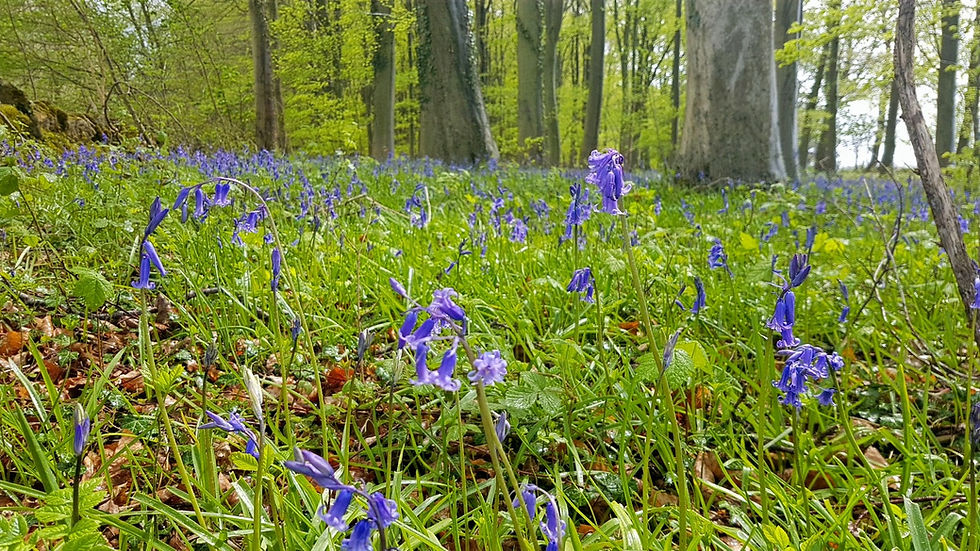Bluebell woodland walks in the Cotswolds
- GraziersCottage

- May 16, 2021
- 2 min read
Updated: Apr 2
Every year starting from the end of April, English woods begin transforming as if by the wave of a magic wand, into magnificent blue carpets. It is the native English bluebell, also known as Hyacinthoides non-scripta that makes its annual appearance.

These delicate flowers are dark-blue in colour, bell-shaped with 6 petals turned up and located on one side of a nodding stem. Most importantly, English bluebells are sweet-scented making your woodland walk a quite remarkable experience.
Quite right, a woodland walk! Even though English bluebells can be found along hedges and in fields, most commonly this flower grows in woodlands. There are quite a few famous bluebell woods in the Cotswolds, one of which is within a one-minute drive from Graziers Cottage. It is totally unspoiled, so you will have a great chance to enjoy an exclusive bluebell extravaganza. If you are quiet and patient, you may even see a deer trotting amongst the trees!
We have made a two-minute relaxing video of these woods, and yes! – with the deer trotting. We are not experts, but it looked like a Roe deer, which is also one of native English species of deer. Enjoy.
Are English bluebells under threat?
Yes, they are. Unfortunately, this beautiful perennial herb became a victim of its own beauty. Many people wanted to have it in their gardens, but English bluebells are hard to “domesticate”. In the early 20th century the Spanish bluebell, Hyacinthoides hispanica, was introduced into the UK as a garden plant. As a more vigorous species, it managed to “escape over the garden wall” to the wild. Today the Spanish bluebell can be found alongside with the native one, outcompeting it and even cross-pollinating and producing hybrids.
What can we do to protect the English bluebell?
Be extra careful when you go on your woodland walk. Bluebells are extremely fragile, their leaves are soft and don’t like to be walked on. Damaged leaves stop photosynthesising and die back. In turn, the bulb does not get enough energy to produce a flower the following year.
The best thing would be to stick to the pathway or admire the bluebell carpets from the edges.
If you wish to plant bluebells in your garden, try to opt for a native one. If you prefer the Spanish bluebell, make sure that you dispose of cuttings and bulbs carefully.



Comments